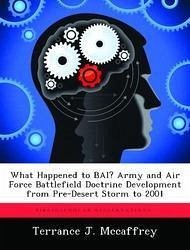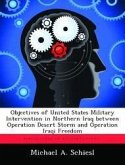This study set out to determine why the term Battlefield Air Interdiction (BAI) disappeared from the military lexicon following the Persian Gulf War. To accomplish this task, the study demonstrates that BAI was present in both US Army and US Air Force doctrine before the war and that it was removed after the war. Additionally, the study investigates three possible explanations for this occurrence. First, it considers whether BAI was eliminated because it no longer served a useful purpose. Second, it contemplates whether service self-interest was instrumental in removing BAI from the doctrine. Finally, the study examines each service's doctrinal development process to determine if the processes themselves were a contributing factor. BAI was important to the Army because it represented a class of targets that lay at an intermediate distance from the front line, whose attack and neutralization was critical to mission accomplishment in both offensive and defensive operations. BAI was also important to the Air Force. BAI gave aerial platforms access to targets inside the Fire Support Coordination Line (FSCL) without "penny packing" airpower to lower-level ground commanders.
Bitte wählen Sie Ihr Anliegen aus.
Rechnungen
Retourenschein anfordern
Bestellstatus
Storno









